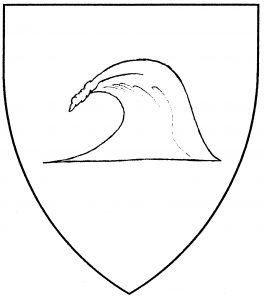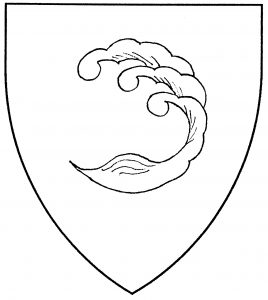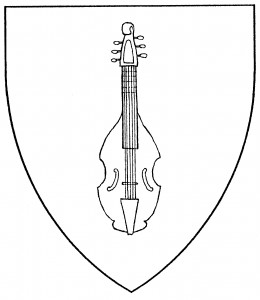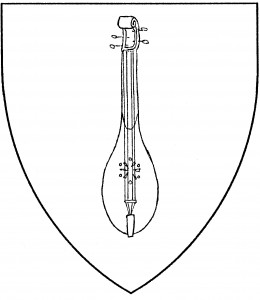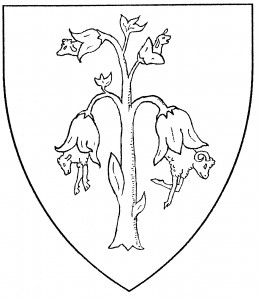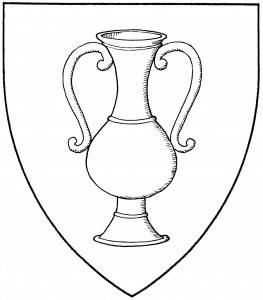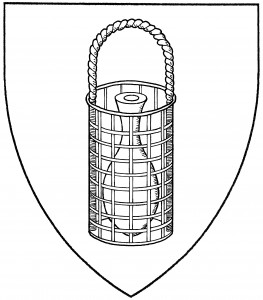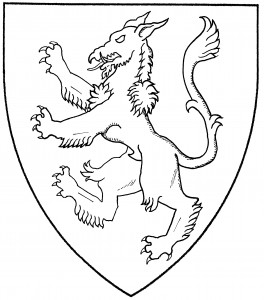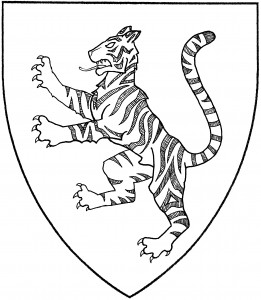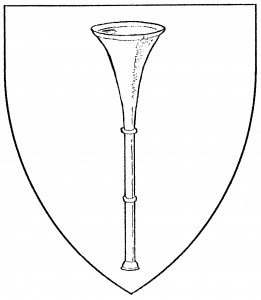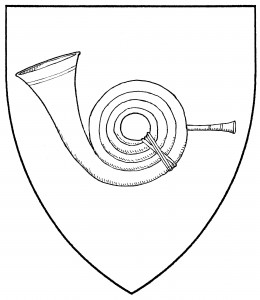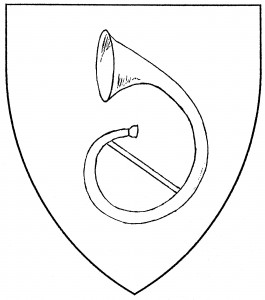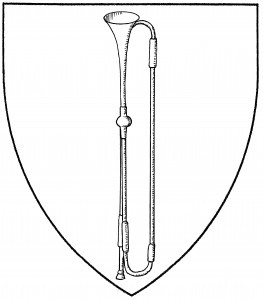
Wagon (Period)
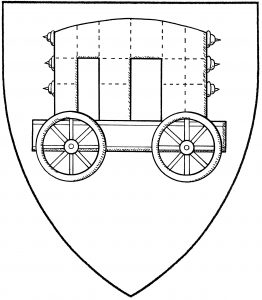
Covered wagon (Accepted)
A wagon is a four-wheeled cart for carrying goods, usually made to be drawn by a horse or ox; it’s also known simply as a “cart”. Its “proper” coloration is brown, the color of wood; it faces dexter by default. The examples from period armory, as in the arms of de Brambilla, mid-15
th C. [Triv 69], show open grates for the wagon’s sides; most wagons in Society armory have solid sides.
A two-wheeled variant, the “oxcart” (Italian baroccio), is found in the canting arms of di Barozi, mid-15th C. [Triv 76].
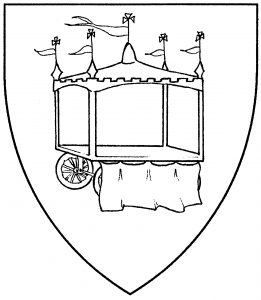
Pageant wagon (Accepted)
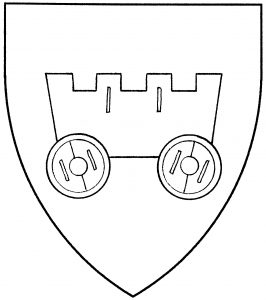
War-wagon (Accepted)
Society variants of the wagon include the “covered wagon”, with a cloth covering stretched over circular hoops; the illustration is taken from the Douce psalter, c.1320. Similar is the “pageant wagon”, a wheeled performance stage, with curtains and ornamentation, used in 15
th Century England. Finally, there’s the “war-wagon”, with an embattled top and arrow slits. None of these variants have yet been attested in period armory; moreover, the pageant wagon carries a step from period practice. For related charges, see
wheelbarrow.
The Baron of Nottinghill Coill bears as a badge: Or, a pageant wagon gules, its pennon staves and pennons azure, and its frontal curtain azure charged with a cross Or.
Æsa the Fierce bears: Vert, a wagon within an annulet argent.
Gunnora Aldyne bears: Azure, on a pale between two carts argent, a mouse rampant azure.
Alail Horsefriend bears as a badge: Per fess azure and argent, a war-wagon counterchanged and enflamed to sinister chief proper.
